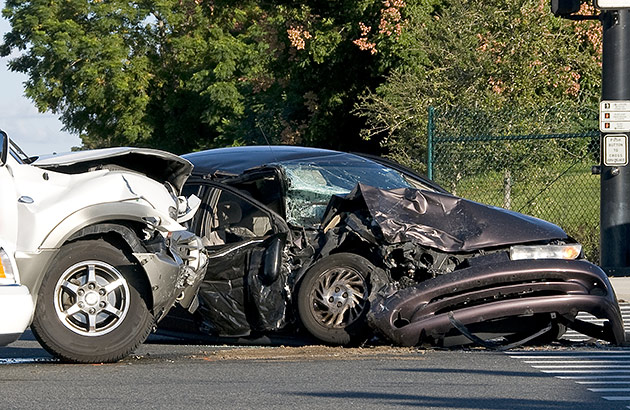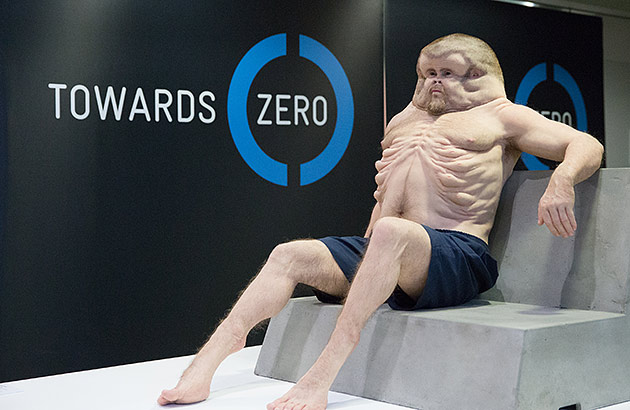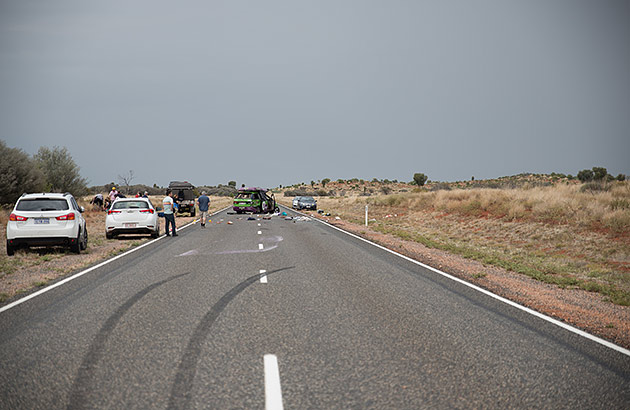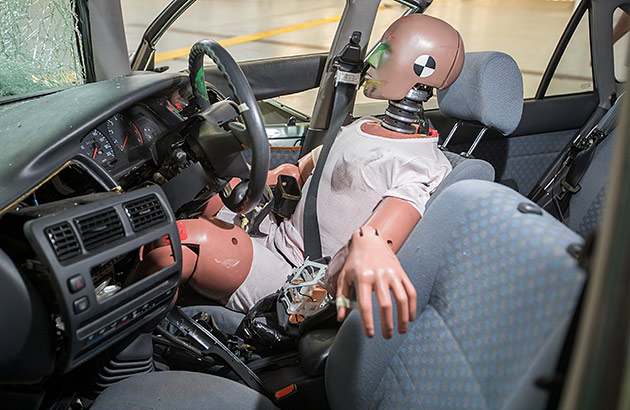23 September, 2020 By: Ruth Callaghan
The human body is simply not built to survive the immense forces exerted during a vehicle crash. Here’s what happens when forces collide inside that hard metal shell.
When driving at higher speeds, there’s no equation in which a crash is harmless. Physics simply doesn’t work that way. And the impact on the fragile human body inside can be catastrophic.
“Trauma is all about the energy that’s transmitted to a very frail organism – the human being,” says Dr Sudhakar Rao, director of Trauma at Royal Perth Hospital’s State Major Trauma Unit.
Dr Rao has spent 25 years trying to patch up and address the results of road trauma and other emergency situations, and says humans aren’t really designed for anything more than falling from a standing height.
“What I’ve learned over time is that when the trauma is from a car crash where the speed is over 100km per hour, the injuries are not that different from what we see in victims of plane crashes,” he says.
“Once you have a crash above that speed, you are approaching the same kind of injuries, where the spinal cord is torn, major blood vessels are torn, you have head injuries. It doesn’t matter what age you are or what stature, there is no escaping physics at that speed.”
The higher the speed, the greater the injuries, but even a low-speed crash can be deadly.
At 30km/h, which is the speed a braking car might hit a pedestrian, a crash can be fatal about 5 per cent of the time. For a pedestrian struck at 60km/h, the risk of fatality jumps to about 50 per cent.
For those in a car travelling at 60km/h, a side-on collision will be fatal around 40 per cent of the time, and at 90km/h, a head on crash will kill you four times out of five.

Meet Graham, the human built to survive
The gulf between what physics can do in a car crash and how little we are prepared was the starting point for a remarkable road safety campaign out of Victoria, known simply as ‘Meet Graham’.
With a neck nearly as wide as his shoulders, a barrel rib cage, distended knees and legs, and a flat, fleshy face, Graham is no looker.
But the artistic representation models the physical changes humans would need if we were to evolve in a way that would make us better able to survive a car crash.
To be sure of surviving a modern car crash, you’d really need a reinforced skull, able to cushion the delicate tissues of the brain.
Fatty facial tissue could help offset the damage caused when the body jerks forward in a crash, hitting the steering wheel or dashboard.
If we had shorter, stumpier necks we might lose our ability to turn our heads, but we would avoid whiplash when a car suddenly ceases moving.

Such evolution is hardly desirable, but the campaign illustrates how vulnerable drivers and passengers really are.
RAC general manager of Public Policy and Mobility, Anne Still, says many people simply underestimate the risks to themselves and others.
“A lot of people can easily reconcile the damage that might be done to the body of a vehicle but they don’t give a lot of thought to what those same forces can do to the human body, which is actually very fragile,” she says.
“The fact is that the body is ill-equipped to deal with the forces that are exerted in a crash and that’s not always appreciated or even considered by some.
“We don’t want it to take being in a crash for people to be conscious of their own and other’s vulnerability when they’re driving.”
Inside the science of a crash
Understanding the factors that go into determining whether the crash is fatal, severe or just a terrible mistake where those involved manage to walk away, is complicated.
For a start, you have to consider that there are actually three collisions that happen during a crash.
The first collision occurs when a vehicle hits something, another car perhaps, or a tree or a pole or even a pedestrian. Depending on what the object is and whether it is also moving — away, or at an angle, or towards the vehicle at speed — influences what happens to those involved.
In a crash where the car stops suddenly, perhaps by hitting a wall, the kinetic energy produced dissipates rapidly as the car body crumples and bends.
The faster that deceleration occurs, the worse things are for the occupants of the vehicle, which is where the second collision comes in.
While the vehicle is stopping, kinetic energy will keep the humans inside moving in the same direction and at a similar speed until they are jerked back by seatbelts, slam into inflating airbags, or hit the steering wheel, dashboard or windshield.
Finally, as the shattered body comes to a halt, the third collision takes place – this time inside the body.
Soft organs, like the spleen and liver, continue to move forward until halted. They can bruise or tear. The heart can undergo aortic rupture. The brain can receive a blow so immense it ceases to function.

Severity of injuries
Dr Rao says trauma teams begin to prepare their response based on the kind of crash and other factors that can make a big difference in the injuries likely to be present.
“If we get told someone’s coming in from a head-on collision, we expect severe injuries,” he says.
“If you have a roll-over, particularly if it has rolled multiple times, you can bet you will have spinal injuries because the person hits the ceiling of the car which is now the floor of the car and it compresses the spine.
“In a T-bone crash it depends on whether the impact is on the passenger compartment, which means high risk of injuries to the torso, chest and abdomen. And in the absence of a curtain airbag, the drivers hit their heads on the B pillar (the central structure) of the car.
RELATED: Looking for clues after a major crash »
“Then we also want to hear about the speed of the crash, were seatbelts used — if they weren’t, we would expect much more severe injuries and the person may have been ejected from the car like a missile.”
If the crash involves a pedestrian or cyclist, even low speeds are risky.
“For a pedestrian, anything over 40km/h would lead to serious injuries to the head, chest and spinal injuries. And with anything over 60km/h there’s a very high risk of death from the head hitting the road,” Dr Rao says.
“For cycling, particularly those without helmets, the risk of serious injury or death at speeds above 25km/h or 30km/h rapidly escalates, because you don’t have anything around you to offer protection.”
Dr Rao says non-fatal car crashes can still have a devastating impact on those involved and many people will live but never fully recover.
“There are reversible, partly reversible and non-reversible injuries,” he says.
“Spinal cord injury and head injury are permanent and that isn’t likely to change any time soon.
“Then you have other spinal injuries, severe pelvic trauma and lower limb trauma. With these your mobility changes and that can have a major effect on your independence. You might not be able to do the same job or participate in social activities.
“For every death there about 10 people who are severely injured, who will never regain their normal function, and another 50 who are badly injured who will eventually regain normal function.”

Getting into a safer car
The speed, direction and force of a crash are far from the only factors that can change the outcome – a major factor is your choice of car.
The younger a car is the more likely it is to have built-in safety features such as airbags and sound structural integrity that channels crash forces away from the occupants, while the growing array of safety assist technologies, such as blind spot monitoring and autonomous emergency braking, are designed to help avoid crashes in the first place.
Rhianne Robson, director of communications and advocacy at the Australasian New Car Assessment Program (ANCAP) - the body charged with undertaking rigorous crash testing of cars on the Australian market - says the star ratings given to vehicles are important in helping consumers make an informed choice about which vehicle to buy.
“The level of protection provided to occupants is vitally important, but equally, ANCAP exists to encourage the development and fitment of collision avoidance features,” Robson says.
“Active safety systems can help prevent or, at a minimum, can reduce the effects of a crash.”
For RAC’s Anne Still, the best safety system is about making a range of better choices.
“A smart choice of vehicle, adherence to speed and road conditions, and avoidance of alcohol, inattention or fatigue could all drastically reduce the risk of a crash on the road.
“There’s also a lot of design work undertaken to try and protect vehicle occupants and other road users. So prioritising safety features when buying a car is a critical element of protecting yourself and others to help create a safe road system.
“It can be all too easy to forget when you get behind the wheel that you’re operating several tonnes of metal which, when it comes up against a very fragile human form, can cause untold and everlasting damage."
